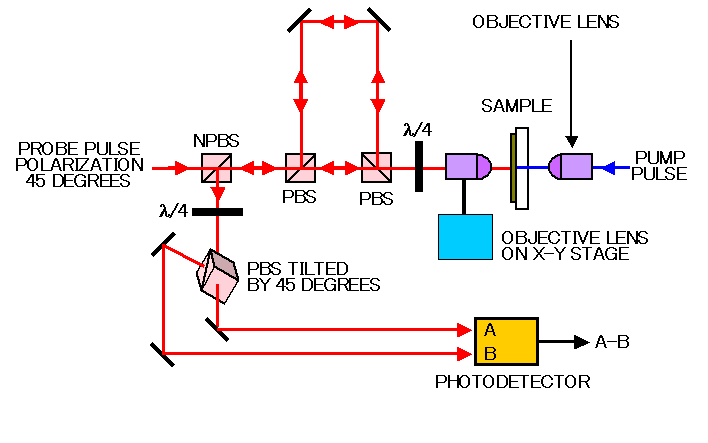

This shows the design of the optical interferometer. It is classed as a Sagnac interferometer because of its use of counterpropagating light beams. PBS, NPBS and λ/4 stand for polarizing beam splitter, non-polarizing beam splitter and quarter-wave plate, respectively.
Two probe pulses arrive at the sample at an interval of 500 picoseconds, and these pulses are combined at the photodetector, where the interfererence occurs. Each pulse effectively probes the outward surface displacement of the sample. We obtain a signal proportional to the out-of-plane surface velocity of the sample at the probed point. The diameter of the probed region is about 2 microns.
The two probe pulses travel in opposite directions inside the interferometer, but cover the same total optical path, and so the interferometer is relatively insensitive to alignment error and mechanical vibration. Such a design is termed common-path.
More details are given in 'Detection of ultrafast phenomena using a modified Sagnac interferometer', D. H. Hurley and O. B. Wright, Opt. Lett. 24, 1305-1307 (1999).
We have also developed variations on this interferometer that can be used for opaque samples. See 'Scanning ultrafast Sagnac interferometry for imaging two-dimensional surface wave propagation', T. Tachizaki, T. Muroya, O. Matsuda, Y. Sugawara, D. H. Hurley, and O. B. Wright, Rev. Sci. Inst. 77, 043713-1-12 (2006).